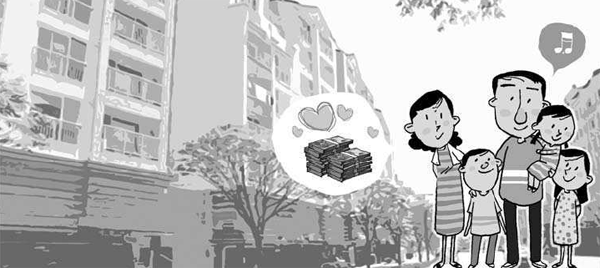Evolution in housing

Kim Hoe-ryong
Yet the apartments didn’t attract much interest at the time. Those were the times when runaway prices were restricted to purchases not rentals. Seoul authorities had hoped to persuade homebuyers to rent amid concerns of housing bubbles due to speculative forces.
Today’s market situation is entirely different. With the sky the limit in rental prices, the middle and working classes are struggling to pay their rents and vainly looking for affordable places to live. In some areas in and around Seoul, lump sum jeonse (lump-sum deposit) fees are 90 percent of the actual home value. Some homes are cheaper to buy than rent. The long-term public rents suddenly emerged as a life-saver. During bidding in the first half of the year, competition was 33.2 against one.
The long-term rentable supplies can alleviate much of the rent crisis, but the problem is that there aren’t many available. About 100,000 long-term rentals have been up for grabs for those without any homes. It is therefore a long shot.
A similar idea came from the private sector. The so-called New Stay homes would be rented out by corporate landlords. The new housing concept is not led by the central or local governments. A construction company will build the apartments and rent them out. A private company would be in charge of maintenance as well. Supplies are targeted at the middle class.
Few now believe home prices could go any higher. According to the mid- and long-term housing supply outline announced by the land ministry in 2013, housing demand across the nation will amount to 390,000 households annually until 2022. But apartments that have already been up for sale or waiting in the pipeline total 490,000 this year, exceeding demand by 100,000. Tenants would move into the apartments sold this year from 2017. Various data suggests home prices would plateau.
In current conditions, more and more middle class people are deciding against buying homes. They opt for rentals instead. Homes specifically built for rent used to be for the poorer classes. They were poorly managed. Up until now, the middle class had no reason to turn to rental homes. Government supplies were entirely reserved for the lower-income classes. But times have changed. More people are thinking it is useless to spend a fortune to buy homes when they aren’t as good an investment as in the past. When considering various taxes attached to home purchases, renting could be smarter option cost-wise. For tenants, it would be better to live in rentals when interest rates are so low. That is why more and more people prefer rentals over home ownership.
But the problem with the current rental market is a dire shortage of supplies. Landlords prefer not to rent out when home prices and interest rates remain so depressed. Long-term rents are becoming scarcer as homeowners offer rents on a monthly basis instead. The unique Korean rental system - jeonse, or rents offered on a one- or two-year basis for a lump sum deposit - may soon go extinct.
Monthly rentals cost more in the long run, but the middle class can afford it as long as living conditions are good. The New Stay project could meet many of their needs. Long-term rental homes supplied by a local developer in Suwon, Gyeonggi Province, drew 3.2:1 competition. Another rent development project in Dowha, Incheon, also recorded a bidding ratio of 5.5:1. Unlike sales offers, there are no conditions attached to bid for the rentals. Anyone over 19 can bid. Rent prices are similar to the market rates. They are not cheap, but nevertheless reasonable. They are paid through a mix of deposit and monthly rent. The higher the deposit, the lower the monthly rent. The homes can be rented out for more than eight years. The homes have all the conditions the middle class would like. But it is too early to say the experiment can succeed.
JoongAng Ilbo, Oct. 21, Page 32
*The author is the business and industrial news editor of the JoongAng Sunday.
Kim Jong-yoon










with the Korea JoongAng Daily
To write comments, please log in to one of the accounts.
Standards Board Policy (0/250자)